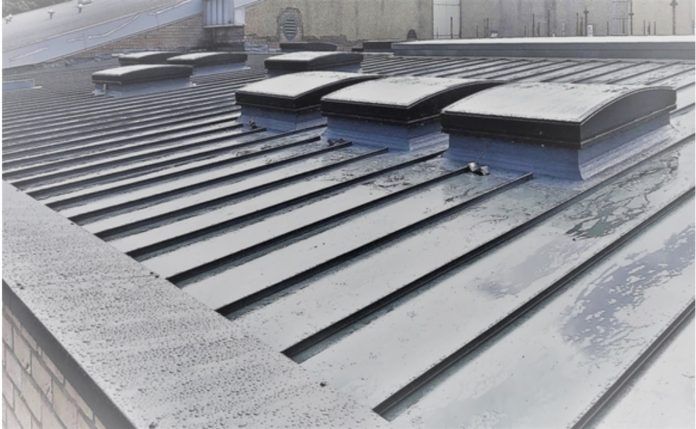In this blog, Andy Jack, business development manager at GL Roofing, discusses the steps in identifying when and if a roof needs to be replaced, and the steps needed to correctly do this.
When it comes to replacing a roof there are some common and less common tell-tale signs you can look for.
Visual wear:
The general indications of visual wear on a roof can usually be spotted easily. This includes visible ageing, cracking and water damage. If you see any damp areas or leaks, this indicates that the roof is beginning to crack, or there is damage to the cladding or panels.
This can appear alarming at first but when caught early enough, a full re-roof can be avoided. The options for fixing leaks or cracking vary from a full re-roof in extreme cases, to re-cladding or over cladding in minor cases.
Sagging:
With a single ply roof, a massive sign that it needs repairing is sagging. Exposure to extreme weather conditions can impact the safety and functionality of the roof. If there is a heavy load of water or snow, the boards can begin to break and buckle under the heavy load. Not only does this cause immediate cosmetic issues with the building, but it also presents danger to the building, as the structure will no longer be safe, thereby requiring immediate replacing.
What to do when a roof needs fixing or replacing?
The first action you should take if a roof needs to be fixed or replaced is to determine that the roof is still structurally sound. Once the issue has been determined, you can start to evaluate the different options.
The most cost-effective option when it comes to a roof repair is often to re-clad or over cladding.
If you have a unit or building that is currently in use but has a level of damage that means considering a re-roof, over cladding could be the answer that minimises disruption to operations and stops inconvenience and loss of revenues.
However, over cladding cannot be used to correct existing structural issues. While over cladding is a good medium-term solution, it will not have the long lifespan of a re-roof.
The benefits of over cladding:
- No disruption to operations
- More cost efficient than a full re-roof
- No loss of revenue
- Upgraded thermal performance by creating a new layer of insulation.
When replacing a whole roof, it is important that you look at every aspect of the build to make sure it fits your customer’s needs, and that it is within budget. A few things to consider with a roof is:
- Type of roofing (cladding, built up, single ply)
- Installation costs
- Durability of roof (look at the conditions or climate you stay in and adjust accordingly)
- Upgrades or additional features
- Load and foot traffic (what equipment is going to be on the roof)
- Roofing lifespan.
Roofing life span
When choosing a roof, keep in mind the average lifespan of the different roofing systems and choose accordingly. Below is a list of lifespan examples:
- Single ply (40 years average)
- Reclad and over cladding (40 years average)
- Built up roof (15 to 30 years average)
- Composite (20 years average).


